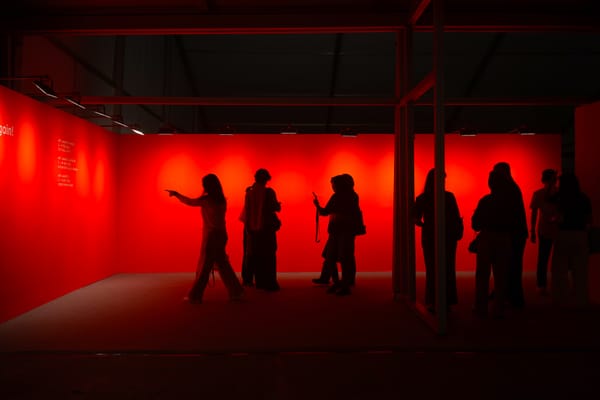Market
Modest Scale, Active Scene: Highlights from Taipei Dangdai 2024
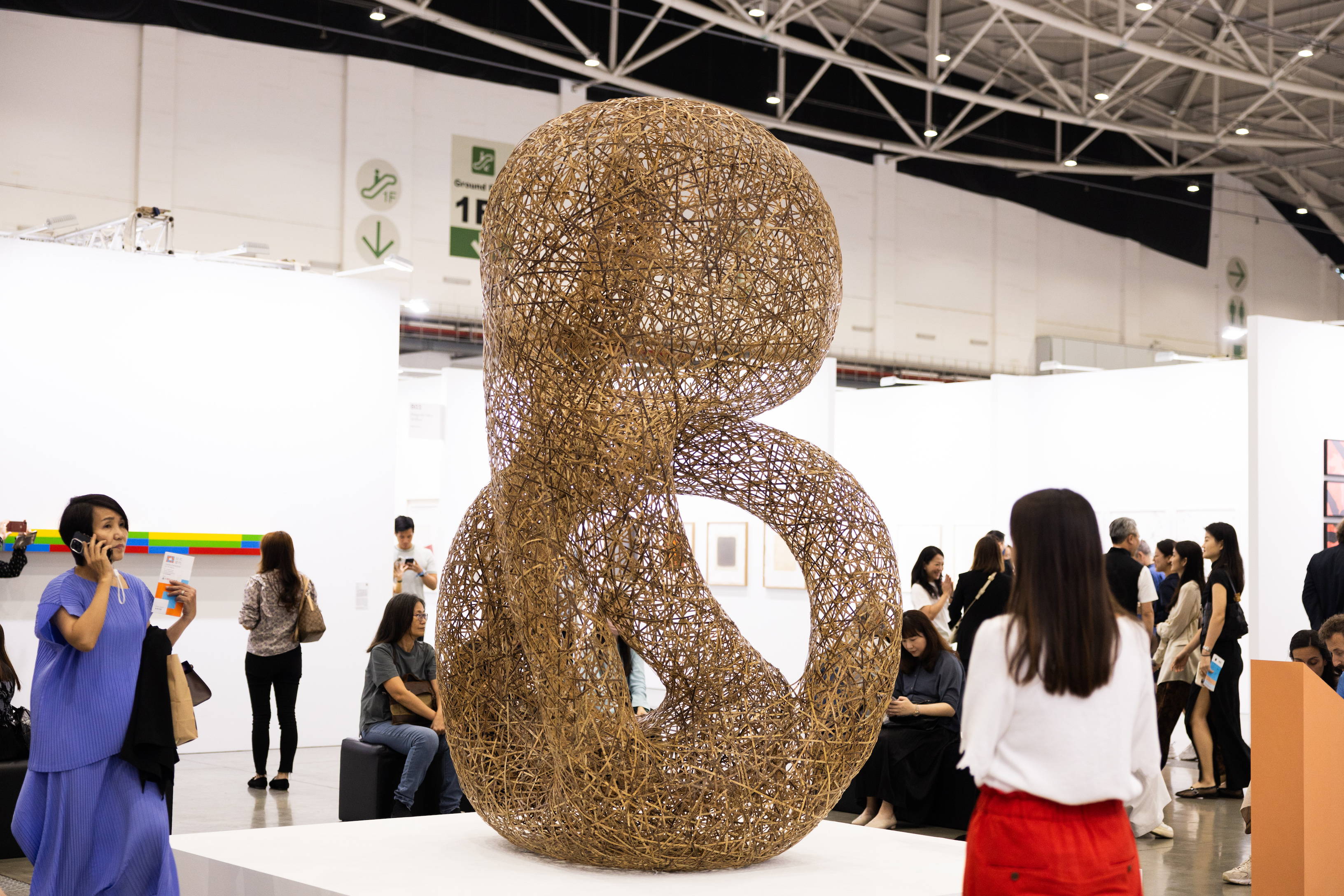.jpg)
.jpg)
Since its launch in 2019, Taipei Dangdai Art & Ideas has had to reckon with increasing tensions between the governments of Taiwan and mainland China, as well as navigating the island’s Covid-19 policies. The art fair’s participation peaked pre-pandemic, at 99 galleries in January 2020 (just before Taiwan reported any Covid cases), but due to travel restrictions the following year it was delayed twice, then canceled altogether. After a slow recovery, the much-anticipated fifth edition returned for a VIP preview on May 9 and ran until May 12, showcasing 78 galleries from 19 countries and territories at the Nangang International Exhibition Center.
Despite a 13-percent reduction in exhibitors compared to the previous edition and restrictions on cross-strait tourism, the high attendance numbers, totaling more than 35,000 visitors, fostered an optimistic atmosphere. While some gallerists expressed concern over the lack of visitors from mainland China, according to the fair’s partner institution UBS, Taiwan is home to 765,000 millionaires, and predicts the amount will increase by 70 percent over four years. Domestic collections in public museums and private foundations sponsored by corporations also cultivate sales, and Taiwan’s growing market was indicated by the numerous institutional directors who attended the fair, including from Fubon Art Museum, Jut Art Museum, Taiwan Fine Arts Foundation, along with public institutions such as Taipei Fine Arts Museum and the New Taipei City Art Museum.
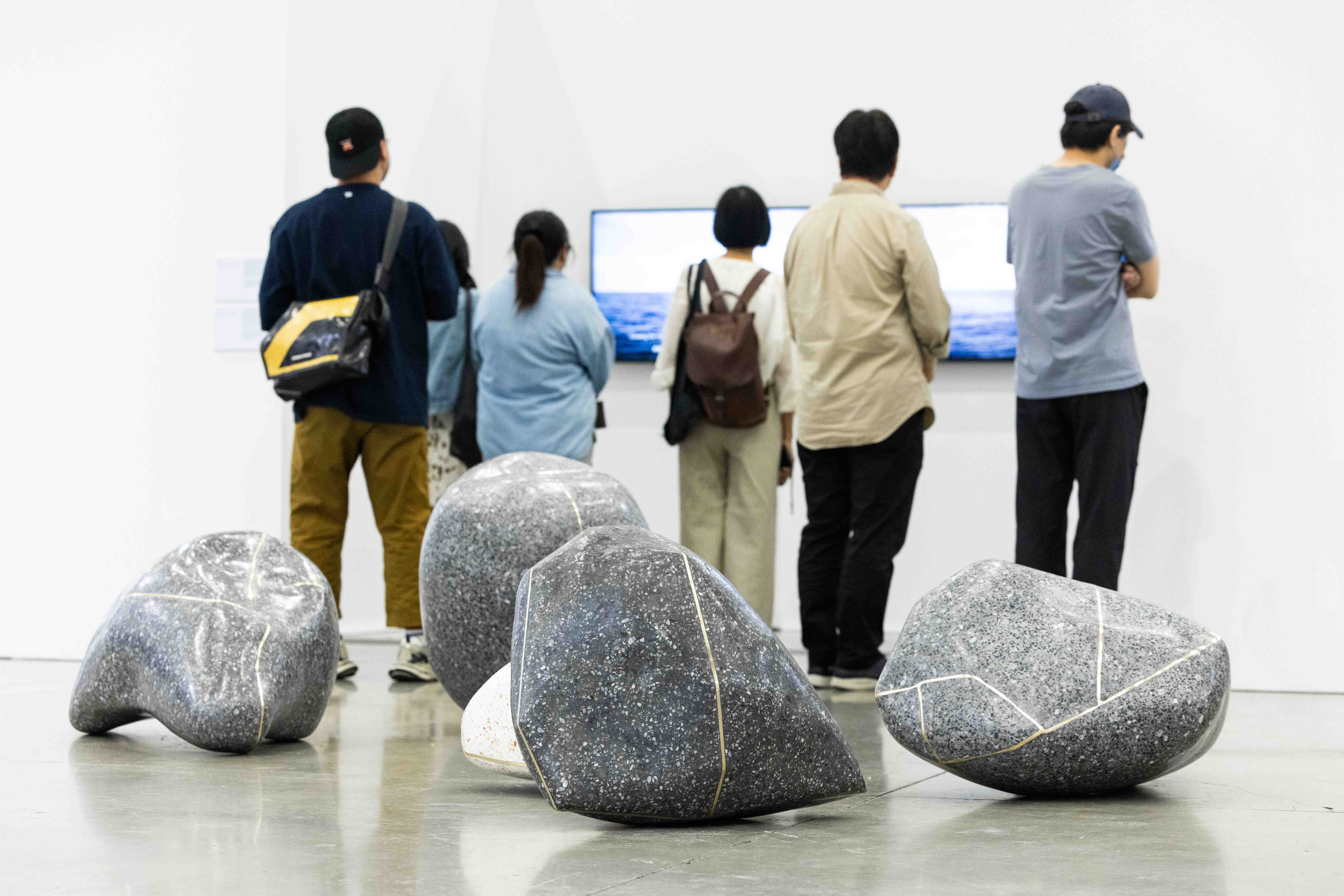
Emblematic of Taipei Dangdai’s emphasis on its active art community, the group exhibition “Before Thunders,” co-hosted by Taiwan’s Ministry of Culture, debuted within the fair. The special exhibition responded to the theme of built versus natural environments following the devastating Hualien earthquakes in April and was collaboratively curated by Taipei-born artist and curator Zian Chen, adjunct curator of Mori Art Museum Martin Germann, former Taipei Contemporary Art Center director Esther Lu, and Singapore-based writer and curator Binghao Wong—all of whom participated in the previous edition’s Ideas Forum. Their research into Taiwanese artists featured artists like filmmaker Su Yu Hsin and multidisciplinary Indigenous artist Rawus Tjuljaviya (Chang En-Man). The curators also expanded the identity category of “Taiwanese” to artists with ties to the island, such as the Tehran-born, currently Taipei-based artist Raha Raissnia, and the Taipei-born, Bangkok-based Ya-Chu Kang.

Another new initiative established this year was the “Evoke” sector, which focused on solo presentations or juxtapositions of established and midcareer artists. Highlights included the Taipei-based gallery Dopeness Art Lab, which exhibited a new series of American artist Cleon Peterson’s graphic black-and-white paintings of warring figures, and Hong Kong’s 3812 gallery, which showcased an impressive array of modernist pioneer Hsiao Chin’s works from the 1960s, many of which were painted in his Milan studio during his involvement with the artist-group Movimento Punto (1961–66). The exhibited Dancing Light 14 (1963), of thick navy brushstrokes against a fuchsia and white background, was particularly evocative of the Hsiao’s contributions to abstraction. New to Taipei, New York’s Marc Straus gallery presented mixed-media woven works by Nigerian artist Ozioma Onuzulike and Malaysian artist Anne Samat, including Onuzulike’s Patterned Lace for Wike (2023), an armor-like hanging work made from over 6,000 ceramic palm kernel shell beads inlaid with recycled glass; Straus’s report of solid sales to “important collections in Asia” evokes Taiwan’s burgeoning interest in African art.
Taipei Dangdai also decreased the size within its emerging artists and galleries sector, known as “Edge,” to 25 square-meters per booth, which encouraged smaller players to apply. Newcomers included Tokyo’s SOM Gallery, Andrea Festa Fine Art of Rome, River Art Gallery from Taichung, Sydney’s Coma Gallery, and Afriart Gallery from Kampala, among others. For a sector focused on emerging artists, painting featured heavily, but perhaps to the artists’ benefit. The Tokyo-based Gallery Common sold several cityscapes by the Japanese artist Koji Yamaguchi, whose diffused oil-on-linen works transform industrial sites into painted dreamscapes. Taipei’s Soka Art sold out its solo presentation of London-based Will Harman’s bold, street-art-esque oil and acrylic works. Coma Gallery sold the majority of Melbourne-born Justin Williams’s new paintings, which depict serene yet quotidian moments of community-based care in a colorful, post-Impressionist style.
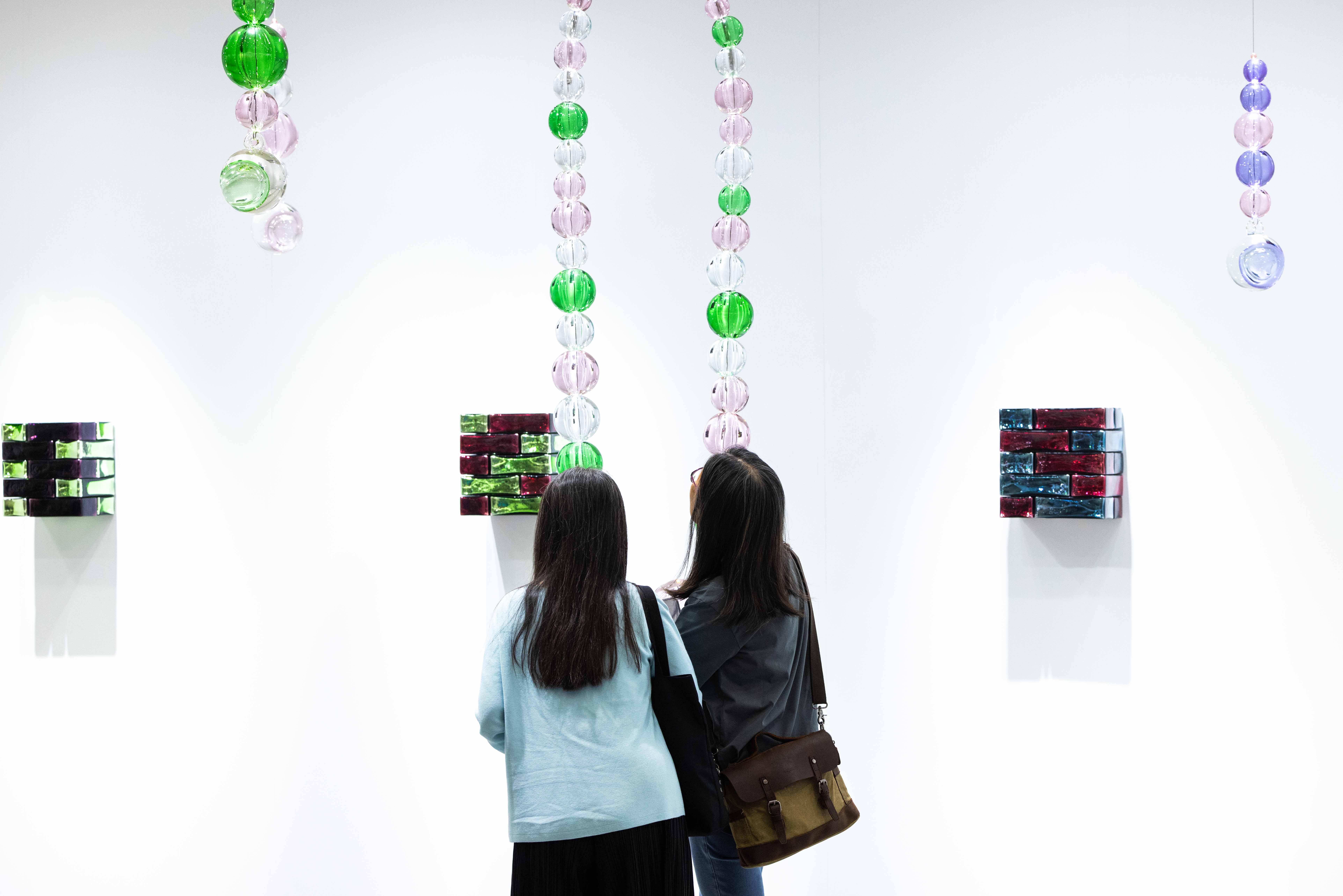.jpg)
While recent editions of Taipei Dangdai have lost leading international dealers such as Lehmann Maupin, Gagosian, and Hauser & Wirth, returning blue-chips in the main “Galleries” sector reported encouraging sales. Here, too, paintings marked the most sought-after works, with sculpture coming in at a close second. David Zwirner (New York/London/Paris/Hong Kong) managed to sell all of New Zealand-born artist Emma Mclntyre’s vibrant, abstract oil-on-linen paintings in the first day of the fair, inspiring confidence in her future solo exhibition at the gallery’s Hong Kong location, slated for 2025. Multinational gallery Perrotin presented a solo exhibition of Jean-Michel Othoniel, including a several of his iconic ice-like sculptures such as Wonder Block (2024), made of translucent blue and pink mirrored glass, which gallery partner Alice Lung said were “well-received by Taiwanese collectors.”

On opening day, Ota Fine Arts (Tokyo/Singapore/Shanghai) sold nearly its entire solo presentation of Hong Kong-born artist Chris Huen Sin-Kan’s new figurative oil-on-canvas and watercolor-on-paper works. As seen in paintings such as Tess and Balltsz and Haze (both 2024), Huen primarily depicts family members and dogs (Balltsz, MuiMui) surrounded by woodlands in a Chinese ink painting-inspired style. Likewise, Hong Kong’s gdm gallery sold out works by two multidisciplinary Taiwanese artists: Steph Huang exhibited sculptures like Non-Functional (2022), a green-and-blue patterned Venetian window-like structure of painted plywood that featured a hand-blown glass vase in the center, and Chi-Tsung Wu’s Cyano-Collage 205 (2024), a massive, 240-by-420 cm cyanotype collage on xuan paper that illustrates crashing ocean waves struck by sunlight.
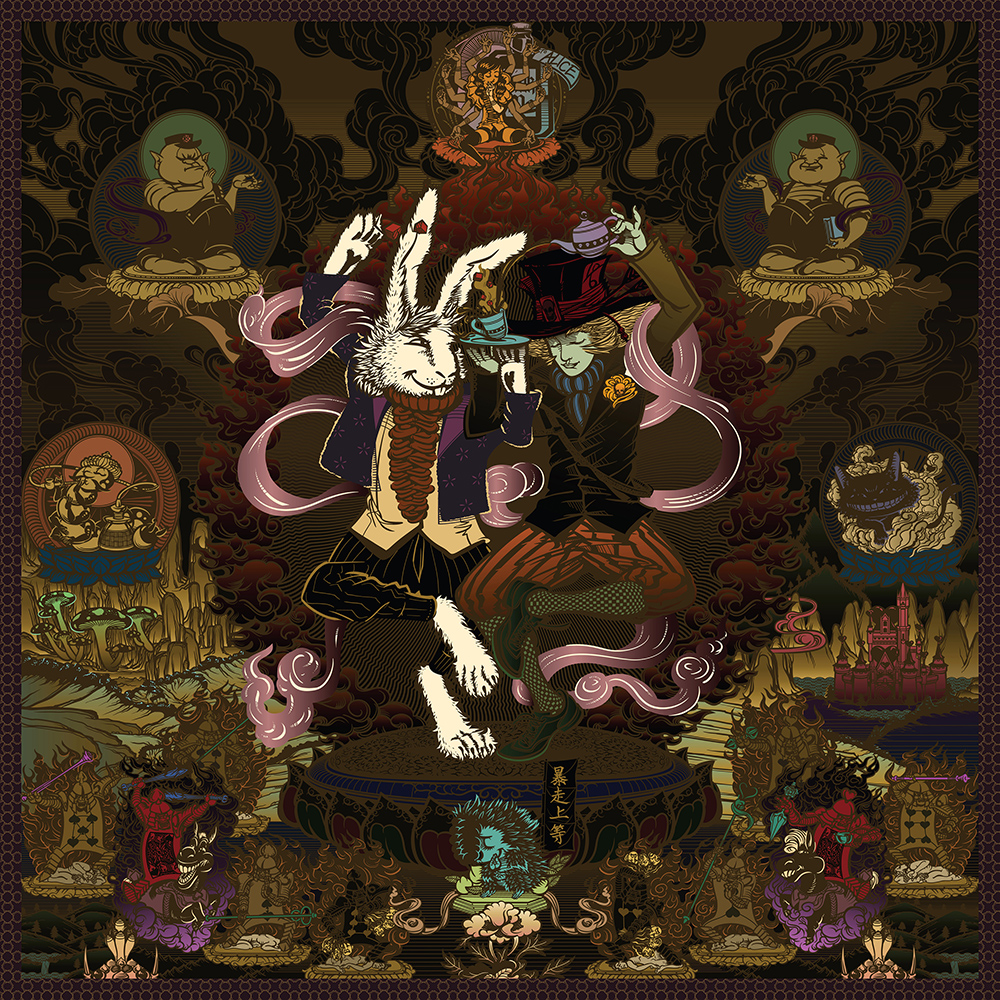
Taipei’s own Tina Keng Gallery, which sold 70 percent of its 40 some-odd works priced up to USD 410,000, was another standout. The most highly requested works included Taiwanese artist Mao-Lin Yang’s Jataka Tale series (2011) of psychedelic metallic prints; monochromatic lacquer-on-wood works by the seminal Chinese painter Su Xiaobai ; circular mixed-media sculptures by Cambodian artist Sopheap Pich; aluminum alloy works by Chinese abstractionist Wang Huaiqing; and a digital animation installation by Taiwanese artist Yuan Hui-Li that nearly sold out of all its available editions.
Elsewhere, the Turkish gallery Dirimart presented a wide selection of works from regional and international artists, including Istanbul-born artist and filmmaker Nuri Bilge Ceylan’s photographs, Fisher boys, India (2014) and Olya by the Oka River, Russia (2012), each priced around USD 17,000, and German abstract artist Anselm Reyle’s untitled, holographic mixed-media painting for USD 80,000. It was the first time Dirimart has participated in the fair, but between the large crowds gathered at the booth and director Levent Özmen’s report of “Taiwanese collectors’ warm response,” it is likely the gallery will return for future editions.
.jpg)
Less impressive was the “Node” sector for large-scale installations. The local Isart Gallery exhibited Taipei-born Julia Hung’s webbed work Indefinite Pink (2024), a white-and-pink thread and resin structure shaped into a tent. The work sought to interrogate gender roles and stereotypes about femininity, particularly in terms of how colors (like pink) or types of labor (like weaving) become associated with gender. But, juxtaposed against other multifaceted sculptures on display that dealt with complex sociopolitical themes—notably, Onuzulike’s and Huang’s works—Indefinite Pink felt like a rather obvious response to the issue of gender. The only other work featured in Node, Infinity (2021) by fourth generation bamboo master Tanabe Chikuunsai, was a stunning display of craftsmanship. However, the figure-eight-shaped woven sculpture was simply not very large compared to some of Chikuunsai’s other monumental works, which felt disappointing for a sector proposing to “go beyond what is possible in a typical art fair booth.”
Over the past several years there has been a significant increase in art fairs across Asia—Seoul’s newest fair, Art OnO, held its the inaugural edition in April, ramping up the competition in domestic and regionally focused markets. Yet, the fair’s co-director and founder Magnus Renfrew’s statement on the opening day, that “it is an exciting moment in the Taiwan market,” continued to be echoed by gallerists and attendees throughout the fair. While the fifth edition may not have been its largest, Taipei Dangdai has carved out a niche for itself in the region, especially among collectors who have not been as directly impacted by mainland China’s economic slump. But with uncertainty in both geopolitics and the global art market, it will be interesting to see how Taipei’s leading art fair will continue to evolve—particularly, whether it will remain focused on Taiwan’s domestic market or if it can attract collectors from the wider region.
Anna Lentchner is assistant editor at ArtAsiaPacific.







